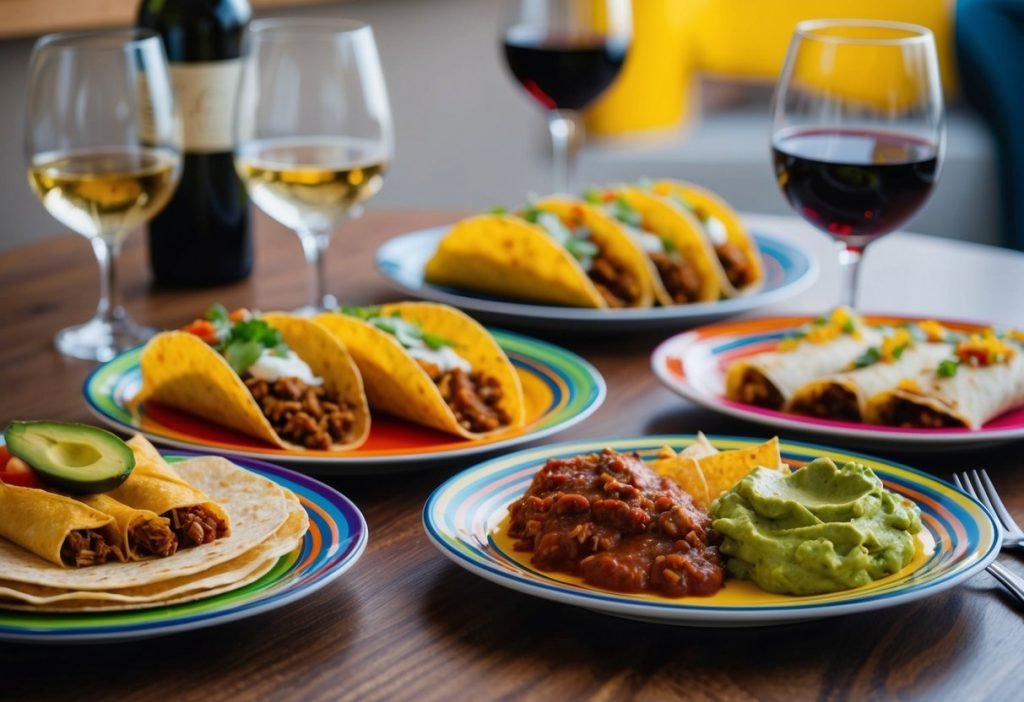When it comes to enjoying spicy foods, selecting the right wine can elevate the dining experience. Wines with a touch of sweetness, such as Riesling or Gewürztraminer, tend to balance the heat of spicy dishes while enhancing their flavors. Understanding how to pair wine with spice can turn a simple meal into a memorable occasion.

Those who appreciate the kick of spice often overlook the significance of wine selection. A well-chosen bottle can bring harmony to the dish, providing a refreshing contrast that complements the heat. This article will explore various wine options that pair seamlessly with an array of spicy cuisines, opening up new avenues for flavor exploration.
Readers will discover that the right wine not only enhances the meal but also amplifies the enjoyment of bold flavors. Armed with knowledge about effective pairings, anyone can confidently navigate their beverage choices the next time they indulge in spicy fare.
Understanding Spicy Foods
Spicy foods possess unique flavors and heat levels that influence dining experiences. To navigate these culinary delights, it is essential to grasp the sources of heat and the various cuisines known for their bold spices.
Heat Levels and Their Sources
Spiciness in food primarily comes from compounds like capsaicin, found in chili peppers. The Scoville Scale measures the heat level of various peppers, ranging from mild bell peppers (0 SHU) to extremely hot varieties like the Carolina Reaper (over 2,200,000 SHU).
Other sources of heat include:
- Black pepper: Contains piperine, which provides a different kind of heat.
- Ginger and garlic: Offer warmth that can enhance dishes.
- Mustard and horseradish: Deliver a sharp, sinus-clearing heat.
Understanding these sources aids in pairing wines with food, as the heat level can influence aroma and flavor perception.
Common Spicy Cuisines
Many global cuisines are celebrated for their spicy character. Key examples include:
- Indian: Uses a range of spices like cumin, coriander, turmeric, and various chili peppers. Dishes like curry and vindaloo are well-known for their intensity.
- Thai: Incorporates chilies, lemongrass, and galangal, often balancing heat with sweetness and sourness in dishes such as pad Thai and green curry.
- Mexican: Features a variety of chili types, from jalapeños to habaneros, in dishes like enchiladas and salsas.
These cuisines provide a diverse array of flavors that complement various wines, allowing for thoughtful pairings based on the specific heat levels and spice profiles present in each dish.
Wine Characteristics
Understanding wine characteristics is essential for pairing it effectively with spicy foods. Key qualities include sweetness and acidity, body and tannins, and alcohol content. These elements influence how well a wine can complement or balance the heat of spicy dishes.
Sweetness and Acidity
Sweetness plays a crucial role when pairing wine with spicy foods. Off-dry wines can help counterbalance the heat. Sweetness can temper the burn, making the overall experience more enjoyable.
Acidity contributes brightness and freshness. Wines with higher acidity can enhance flavors and cleanse the palate between bites. This attribute is particularly beneficial when enjoying dishes with bold spices.
Recommended options include Riesling and Gewürztraminer, often featuring both sweetness and acidity. These wines can enhance the dining experience by providing a contrast to the spice.
Body and Tannins
Body refers to the weight and fullness of the wine. Wines can be categorized as light, medium, or full-bodied. For spicy foods, medium-bodied wines often strike the right balance. They won’t overwhelm the dish while providing enough substance to match it.
Tannins can add complexity but may clash with spicy flavors. Red wines with high tannins, like Cabernet Sauvignon, might intensify heat. In contrast, lower tannin wines, such as Pinot Noir, can complement spicy foods effectively.
Choosing a lighter alternative, like a chilled red, can provide a refreshing contrast without overwhelming the palate.
Alcohol Content
Alcohol content impacts the perception of spice. Higher alcohol levels can amplify the heat in spicy dishes. Wines with lower alcohol, around 12-13%, are generally more favorable. They allow the flavors of both the wine and food to shine without excessive burning sensations.
Optimal choices include wines like Beaujolais or Sauvignon Blanc, often possessing enough vibrancy. They enhance the enjoyment of the meal while keeping spice levels in check.
Selecting wine with the right characteristics can transform the experience of eating spicy food into a harmonious pairing.
Pairing Strategies

Choosing the right wine for spicy foods involves careful consideration of flavors and sensations. Two effective approaches are complementary pairings and contrasting pairings, both aiming to enhance the dining experience.
Complementary Pairings
Complementary pairings work by matching the intensity and flavors of the dish with the wine. For spicy foods, this often means selecting wines with fruity characteristics that can harmonize with the heat.
Recommended Wines:
- Riesling: Its sweetness and acidity balance spicy dishes.
- Gewürztraminer: This aromatic wine has floral notes that complement spices.
- Zinfandel: A fruit-forward red that pairs well with barbecued spicy meats.
These options allow the richness of spicy flavors to shine while softening the overall experience.
Contrasting Pairings
Contrasting pairings aim to create a balance between the food and wine through opposing flavors. This approach can help neutralize the heat and enhance different elements of the dish.
Recommended Wines:
- Sparkling Wine: The bubbles cleanse the palate and cut through spice.
- Sauvignon Blanc: Its acidity offers a refreshing contrast to spicy profiles.
- Pinot Noir: A lighter red that provides earthiness without overwhelming the dish.
This strategy enhances the meal by allowing the diner’s palate to experience a range of sensations, creating a memorable dining experience.



